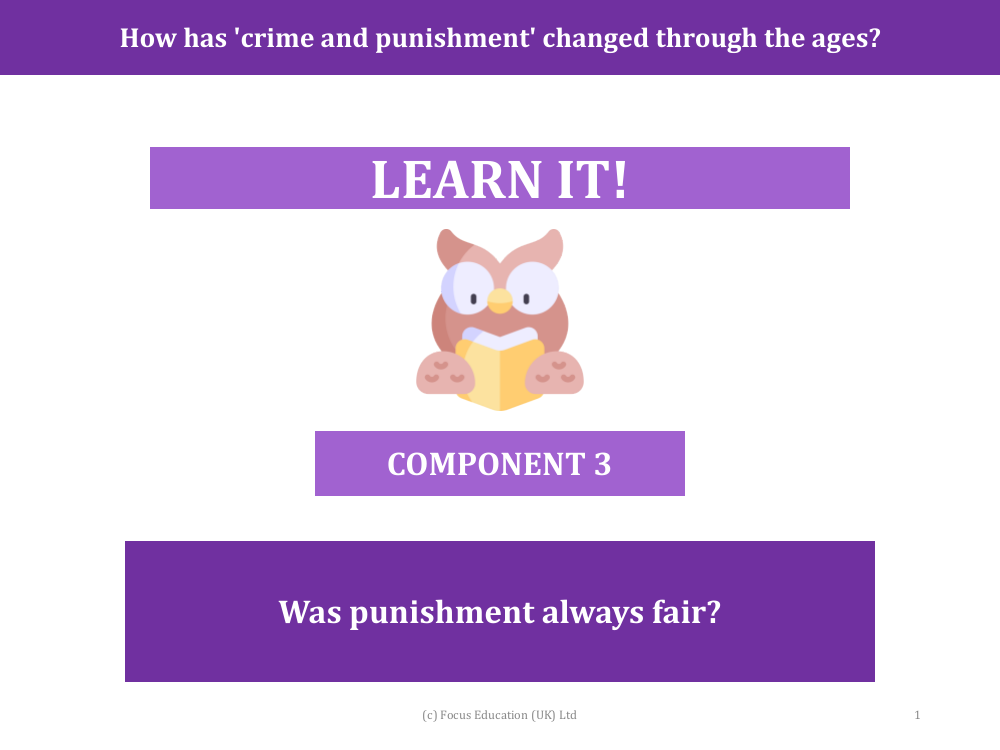Was punishment always fair? - Presentation

History Resource Description
The presentation titled "Was punishment always fair?" explores the evolution of 'crime and punishment' through different historical periods, with a particular focus on the fairness of punishments. It is a concise unit that encourages students to delve into the history of the criminal justice system and to critically assess the nature of punishments meted out in the past. A video link is provided to give students a vivid representation of how barbaric some historical punishments were, which serves as a catalyst for discussion on the lack of fairness and the denial of a chance for the accused to defend themselves. Students are then tasked with writing a paragraph explaining why punishment has not always been fair, promoting critical thinking and empathy towards those who suffered unjustly.
The presentation further prompts students to consider how societal attitudes towards vagrants and beggars during Tudor times influenced the severity of punishments. A table details the progression of punitive measures from confinement in stocks to branding and even execution for repeat offenders. The Elizabethan Poor Law is also mentioned, highlighting how local taxes were used to support the poor and provide work, with refusal to work leading to whipping and imprisonment. This historical context sets the stage for students to engage in a deeper conversation about the fairness of punishment and the principle that the punishment should fit the crime. The recurring emphasis on a YouTube link serves as an educational tool to enhance the learning experience and provoke thought on the fairness and evolution of punitive practices.



